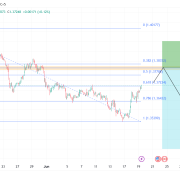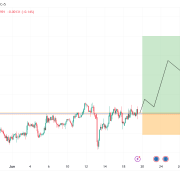
WesBanco , Inc. (NASDAQ:WSBC) announced a strong financial performance in its Third Quarter 2024 Earnings Conference Call on October 24, 2024. Led by CEO Jeff Jackson and CFO Dan Weiss, the company reported a net income of $36.3 million, or $0.56 per share. WesBanco experienced significant growth in loans and deposits, with loans increasing by $1.1 billion and deposits by $750 million year-over-year. The company also successfully raised $200 million in common equity, enhancing its tangible common equity ratio to 8.84%.
Key Takeaways
Net income stood at $36.3 million, with earnings per share (EPS) of $0.56.
Loans and deposits grew substantially, with a $1.1 billion increase in loans and a $750 million rise in deposits compared to the previous year.
The “Summer of One” campaign contributed to a 12% annualized growth in deposits.
The acquisition of Premier Financial Corp. is on track for closure in Q1 2025.
Non-performing assets decreased to 0.17% of total assets, indicating strong credit quality.
Non-interest income grew by 6% to $31.3 million, driven by record assets under management and brokerage account value.
Non-interest expenses rose by 2% to $99.2 million, while efficiency improvements led to a reduction in salaries and wages.
The company projects a modest improvement in net interest margin and an effective tax rate of approximately 17.5% for the year.
Company Outlook
WesBanco anticipates continued loan growth and a modest improvement in net interest margin.
The company expects to realize $4 million in annual savings from the consolidation of 11 branches.
Two Federal Reserve rate cuts are anticipated in November and December, with four more in 2025, which are expected to benefit the net interest margin.
Bearish Highlights
Non-interest income was negatively impacted by a $1.7 million adjustment in swap fees.
The fourth quarter may see higher healthcare costs and full merit increases affecting salaries.
Bullish Highlights
The company remains optimistic about loan growth due to improved talent management and new deposit initiatives.
The acquisition of Premier Financial is expected to contribute to a pro forma margin of 345 to 350 basis points.
WesBanco is actively recruiting talent to sustain growth momentum, particularly in Knoxville and other markets.
Misses
Despite overall strong performance, the company reported a decrease in non-interest income due to a negative adjustment in swap fees.
Q&A Highlights
Management has a neutral stance on interest rate changes, indicating minimal impact from a 25 or 50 basis point cut.
The company has successfully reduced CD rates and managed to avoid significant payoffs in commercial real estate.
The focus remains on organic growth and operational efficiency to sustain positive operating leverage.
WesBanco’s financial strategy and performance continue to show resilience and growth. The company’s focus on operational efficiency, talent recruitment, and organic growth positions it well for the future, especially in light of the anticipated benefits from the upcoming Premier Financial acquisition and the positive impact of expected Federal Reserve rate cuts.
InvestingPro Insights
WesBanco’s strong financial performance in Q3 2024 is further supported by data from InvestingPro. The company’s market capitalization stands at $2.02 billion, reflecting its solid position in the banking sector. With a P/E ratio of 14.41, WesBanco appears to be reasonably valued compared to industry peers.
One of the most notable InvestingPro Tips is that WesBanco has raised its dividend for 13 consecutive years, demonstrating a commitment to shareholder returns. This aligns with the company’s reported financial strength and growth in loans and deposits. The current dividend yield of 4.74% is particularly attractive in the current market environment.
Another relevant InvestingPro Tip highlights that WesBanco has maintained dividend payments for 48 consecutive years. This long-term consistency in dividend payments underscores the company’s financial stability and may be appealing to income-focused investors.
The company’s profitability over the last twelve months, as noted by InvestingPro, supports the positive earnings report presented in the Q3 2024 conference call. With a return on assets of 0.76% for the last twelve months, WesBanco demonstrates its ability to generate profits from its asset base.
It’s worth noting that InvestingPro offers additional tips and insights beyond those mentioned here. Investors interested in a more comprehensive analysis of WesBanco can access over 10 additional tips available on the InvestingPro platform.
Full transcript – WesBanco Inc (WSBC) Q3 2024:
Operator: Hello, and welcome to the WesBanco Third Quarter 2024 Earnings Conference Call. All participants will be in listen-only mode. [Operator Instructions] After today’s presentation, there will be an opportunity to ask questions. [Operator Instructions] Please note, this event is being recorded. I would now like to turn the conference over to John Iannone, Senior Vice President, Investor Relations. Please go ahead.
John Iannone: Thank you. Good afternoon, and welcome to WesBanco, Inc’s third quarter 2024 earnings conference call. Leading the call today are Jeff Jackson, President and Chief Executive Officer; and Dan Weiss, Senior Executive Vice President and Chief Financial Officer. Today’s call, an archive of which will be available on our website for 1-year, contains forward-looking information. Cautionary statements about this information and reconciliations of non-GAAP measures are included in our earnings related materials issued yesterday afternoon, as well as our other SEC filings and investor materials. These materials are available on the Investor Relations section of our website, wesbanco.com. All statements speak only as of October 24, 2024, and WesBanco undertakes no obligation to update them. I would now like to turn the call over to Jeff. Jeff?
Jeffrey Jackson: Thanks, John, and good afternoon. On today’s call, we will review our strong third quarter 2024 results and provide an update on our operations and current outlook for the fourth quarter. Key takeaways from the call all today are continued strong deposit and loan growth combined with solid credit quality. We focused on organic growth and efficiency gains to achieve positive operating leverage. Our transformative acquisition of Premier Financial Corp. remains on track, pending regulatory and shareholder approvals. WesBanco marked strong momentum in the third quarter, driven by strategic actions that continue to strengthen our balance sheet. These include robust deposit and loan growth and the pay down of higher cost borrowings. Over the last year, WesBanco has grown loans by $1.1 billion and deposits by $750 million, reflecting the continued strength of our teams, markets and strategies. For the quarter ending September 30, 2024, we reported net income, excluding restructuring expenses available to common shareholders of $36.3 million and earnings per share of $0.56. We successfully raised $200 million of common equity during the quarter to position WesBanco for future growth. Reflecting this capital raise and strong earnings, our tangible common equity ratio increased 132 basis points quarter-over-quarter to 8.84%. The key story for the third quarter was our continued strong deposit and loan growth, as sequential quarter deposit growth of 12% annualized was double annualized loan growth of 6%. Impressively, our total and commercial loan growth and deposit growth significantly outperformed the monthly H.8 data for all domestically chartered commercial banks on both a year-over-year and quarter-over-quarter basis. These proof points demonstrate the success of our strategies and teams. On the deposit gathering side, our recent Summer of One campaign named for our well-received WesBanco One account was a great success, thanks to the partnership between our retail, commercial, marketing, and strategy teams. We opened more than 6,000 new consumer accounts, helping to drive our 12% annualized deposit growth. Additionally, our teams grew total deposits by $750 million or 6% during the last 12 months, reflecting their ongoing success and engaging current and prospective customers. On the loan side, third quarter loan growth was 10% year-over-year and 6% quarter-over-quarter annualized, again, driven by our commercial and residential lending teams. Total commercial loans increased 12% year-over-year and 8% sequentially on an annualized basis driven by commercial real estate. Our four newest loan production offices accounted for nearly 20% of the commercial loan growth year-to-date led by our Nashville and Chattanooga, Tennessee offices. These are proof points of the success of our LPO strategy. Our commercial loan pipeline as of September 30 was approximately $830 million, up slightly from a year ago but down from June 30, as our teams converted the pipeline into another solid quarter of loan growth. Based on the current loan pipeline, we expect solid loan growth during the fourth quarter as well. Since year end 2021, we have achieved a strong compound annual loan growth rate of 9.4%. It’s important to note that we achieve this impressive growth, which roughly the same number of bankers thanks to our talented teams continued productivity gains and great recruiting. What makes this growth even more notable is our banker success in delivering comprehensive relationship banking solutions including deposits, ancillary products and services, and wealth management solutions. These relationship-focused efforts positioned WesBanco as a strong financial services partner helping further our mission of fostering lasting prosperity for our customers and our organization. A great example of our relationship banking success occurred in August, when a financial center manager observed that an existing client was having difficulty managing their line of credit and capital position. A team spanning retail, business and commercial banking along with treasury set out to work with the client understanding their issues, educating them on options and crafting a tailored solution. Their collaborative efforts resulted in opening of multiple deposit accounts with 6-figure balances, an improvement in the client’s credit line management and a reduction in their cost of capital. Our deep understanding of the client’s needs and our personalized approach strengthened the client relationship and resulted in a winning solution for both the client and WesBanco. Our underwriting and credit standards are a legacy of our company and we are achieving our strong loan growth without sacrificing credit quality. Our non-performing assets decrease to 0.17% of total assets, which as can be seen in our supplemental earnings presentation is less than half the level for all banks with asset size between $10 billion and $25 billion. Criticized and classified loans as a percent of total loans have remained in a consistent range for the last 9 quarters. While total loans past due increased roughly 20 basis points during the third quarter to 0.44 of total loans, we expect these loans to be resolved by the end of the fourth quarter. Turning to our pending acquisition of Premier Financial, we have filed all necessary bank regulatory applications as well as the initial filings with the SEC to schedule the shareholder meetings and remain on track for a first quarter closing pending regulatory and shareholder approvals. Through this transformative acquisition, we expect to accelerate our positive momentum, build on Premier’s legacy of community engagement and support, and together bring the resources of a larger, stronger financial services organization to benefit all of our communities. Lastly, I am proud that WesBanco has again been recognized for our success in building a workplace culture where purpose, belonging, and opportunity thrive. In August, we were named one of America’s Greatest Workplaces for Parents and Families by Newsweek. We were 1 of just 7 banks to receive a 5-star rating, Newsweek’s highest performance mark. By fostering a supportive and family-friendly workplace, we enhance the well-being of our team members and contribute to our broader vision of making every community we serve a better place for people and businesses to thrive. When our employees and our families thrive, so do our organization and communities. I would now like to turn the call over to Dan Weiss, our CFO, for an update on our third quarter financial results, and current outlook for the fourth quarter. Dan?
Daniel Weiss: Thanks, Jeff, and good afternoon. For the quarter ending September 30, 2024, we reported GAAP net income available to common shareholders of $34.7 million, or $0.54 per share, and when excluding after-tax restructuring and merger-related expenses, net income was $36.3 million, or $0.56 per share, as compared to $34.8 million, or $0.59 per share in the prior year period. To highlight a few of the third quarter’s accomplishments, we achieved strong loan and deposit growth both year-over-year and sequentially, raised $200 million of common equity in support of future growth, improved net interest income, and effectively managed discretionary and personnel costs. All of this resulted in a $0.07 increase in earnings per share over the linked second quarter, despite an increase in share count from the capital raise. As of September 30, total assets of $18.5 billion included total portfolio loans of $12.5 billion and total securities of $3.4 billion. As Jeff mentioned, loan growth remained robust and was driven by our commercial and residential lending teams. With a strong pipeline, nearly $1 billion in unfunded LCD commitments expected to fund over the next 12 to 18 months, and CRE payoffs at historically low levels, we continue to be optimistic about future loan growth. The commercial real estate payoffs totaled approximately $185 million year-to-date as compared to an annual level in the $500 million range in a more normal operating environment. Deposits of $13.8 billion, which were up 5.7% versus the prior year and 12.1% annualized linked quarter, reflected the success of our summer deposit retention and gathering campaigns. The composition of total deposits continues to experience mixed shifts, but at a slower pace than experienced in prior quarters, as most deposits have already repriced upward. As is typical during a higher rate environment, we have experienced strong growth in CD. However, when excluding them, we realized deposit growth of 2.2% year-over-year and 4.3% quarter-over-quarter annualized. Credit quality stability continues as key metrics have remained low from a historical perspective and within a consistent range through the last 2-plus-years. The allowance for credit losses, the total portfolio loans at the end of the quarter, increased slightly to 1.13% of total loans, primarily due to higher unemployment assumptions and other qualitative adjustments. The third quarter margin of 2.95% remained stable compared to the second quarter and reflected both higher loan yields and higher funding costs, while the year-to-date margin increased 1 basis point to 2.94% as compared to the second quarter. The margin also benefited from the pay down of $300 million of Federal Home Loan Bank borrowings from deposit growth exceeding loan growth and the $200 million of equity raised during the third quarter. Of the $1.2 billion of Federal Home Loan Bank borrowings, approximately 75% with an average rate of 5.2% mature during the fourth quarter, and that should benefit our 2025 net interest margin as they reprice at lower rates. Total deposit funding costs, including non-interest bearing deposits for the third quarter of 2024 were 205 basis points, an increase of 10 basis points over the linked quarter. Non-interest income in the third quarter totaled $29.6 million, a 4.1% decrease from the prior year period due to lower net swap fee and valuation income, which was driven by a negative fair value adjustment this year as compared to a gain last year. When excluding these adjustments, non-interest income would have increased 6% to $31.3 million. Trust fees and securities brokerage revenue increased a combined $1.1 million year-over-year driven by record levels of assets under management of $6.1 billion and brokerage securities account values of $1.9 billion, both of which rose from organic growth and market appreciation. We are focused on organic growth and efficiency gains to achieve positive operating leverage and managing our discretionary and personnel costs are a key component. Excluding restructuring and merger related expenses, non-interest expense for the 3 months ended September 30, 2024 totaled $99.2 million, a 2% increase year-over-year, primarily due to increases in other operating expenses, and equipment and software expenses. Other operating expenses increased $1.5 million, primarily due to higher costs and fees, and supportive loan growth, and higher other miscellaneous expenses. And equipment and software expense increased $1 million, reflecting the impact of the prior year ATM upgrades, which, as we know, were phased in throughout the prior year. Salaries and wages decreased $500,000 compared to the prior year period due to lower staffing levels associated with efficiency improvements in the mortgage and branch staffing models, partially offset by normal compensation merit increases. Employee benefits decreased $400,000 due to lower health insurance costs driven by lower staffing levels compared to the prior year period. Turning to capital, we enhanced their capital structure on August 1st through successfully raising $200 million of common equity in conjunction with the announcement of the pending acquisition of Premier Financial. Our already strong capital position benefited from the equity raise, strong earnings, and as a result, we’ve demonstrated favorable tangible equity levels compared to our peers, while regulatory capital ratios have remained above the applicable well-capitalized standards. Turning to our outlook for the fourth quarter, and please note that we will provide our 2025 outlook during the January call. We are modeling two additional Fed rate cuts in November and December, which is not expected to have a significant impact on 2024 results due to timing, followed by four more cuts in 2025. We continue to model the fourth quarter’s net interest margin to improve modestly in the upper 290s as our funding costs reprice down at a faster pace than our assets. We anticipate non-interest income and non-interest expense to remain relatively consistent with third quarter trends. As previously disclosed, we successfully consolidated 11 branches in the nearby locations earlier this month to ensure optimal distribution to best serve our customers. The anticipated annual savings is approximately $4 million, the majority of which will be realized during 2025. And finally, the provision for credit losses will mostly be dependent upon loan growth, economic factors, and charge-offs. And our effective tax rate should be in 17.5% range for the year. Operator, we’re now ready to take questions. Would you please review the instructions?
Operator: Thank you. [Operator Instructions] Today’s first question comes from Daniel Tamayo with Raymond James. Please go ahead.
Daniel Tamayo: Hi, sorry about that. Good afternoon, everyone. Maybe first, on the margin as it relates to interest income. We talked about a little bit of the expansion in the fourth quarter up to the upper 290s. Maybe you could just remind us, you talked about the 2025 guidance coming out next quarter, but you’re baking in four cuts. Just remind us what the impact from each one of those cuts may be.
Daniel Weiss: Yeah, Danny, I can take that. I mean, I would tell you that that’s a long complicated calculation that I could probably spend an hour or so talking through, but I would say at a high level just for the fourth quarter alone, if we think about the deposit growth that we experienced just here in the third quarter and our ability to pay down Federal Home Loan Bank borrowings with those deposits as well as the $200 million in capital that we raised, that alone provides some margin improvement above the 2.95% that we reported here in the third quarter. And so, if we really tried to boil things down that would probably be the primary driver today for that margin guidance in the fourth quarter.
Daniel Tamayo: Okay. And then maybe I’m switching over to the credit side. So really the early stage numbers look good for you guys, LPOs [ph] down at a good number and maybe a little bit of an increase in the criticized and classified, but not too much. But it’s been a couple of very strong quarters from a net charge out perspective forecasts or my forecasts were kind of well above where you guys have been coming in. I’m just curious, I guess on the near-term what you’re able to see visibility wise from a credit perspective, if things look relatively similar to what you’ve produced over the last couple of quarters?
Jeffrey Jackson: Yeah, sure. I’ll take that one. I think that we’re still seeing great credit quality. I would expect it to be somewhere in the range of where we’ve been over third quarter, second quarter, somewhere in that range between the two of them. But once again, we’re not really seeing any issues out there. We like others, we have a one-off here and there, but those seem to be getting resolved. So we feel really good about where we’re at with the credit quality. And I don’t foresee any dramatic changes going forward.
Daniel Tamayo: Terrific. Thanks, Jeff. And then maybe just on the topic of the increase on the criticized classified side, just do you have any color on what type of loans those are comprised of that’s driving that?
Jeffrey Jackson: Yeah, it’s a broad swath of different industries and different C&I, CRE. There’s not really one area at pinpoint. And like I said, we feel really good about where we’re at. And I think some of those will migrate over the next several quarters. So there’s not one area I could really pinpoint to say it’s driving that. But I feel very confident that it’ll continue to move in the right direction going forward.
Operator: Thank you. The next question comes from Russell Gunther with Stephens. Please go ahead.
Russell Gunther: Hey, good afternoon, guys. I’d like to follow-up on the margin commentary, Dan, you provided. I appreciate the color there. You mentioned the positive catalyst of the FHLB maturities in the fourth quarter as a benefit to the 25 NIMs. So could you help us with where you’d expect that kind of core NIM to step up to early next year and then as we layer in the acquisition, how you’d expect that pro forma margin to shake out as we start the year?
Daniel Weiss: Yeah. So I’ll try to dive here a little bit deeper into the margin for your question here, Russell. If we think about kind of funding sources, so over the next month, we have about $900 million in Federal Home Loan Bank borrowings at a weighted average rate of about 5.2% that will reprice. These are 1-month advances. That will continue to provide benefit to our interest expense as we move forward. We also have about $800 million in indexed Insured Cash Sweep product that will reprice down. That reprice is down immediately. Another $700 million in tiered private client money market accounts as well. Continuing on the funding side, $2.1 billion in interest bearing deposits that have repriced down a full 50 basis points and will also be very reactive to any future rate cuts. And, as I said, we are anticipating a 25 basis point cut in November and December, and then basically one in each quarter in 2025. And then kind of on top of that, we’ve got another $200 million in broker deposits. Their Fed funds plus 20 basis points also indexed and repricing immediately. They’ll actually mature here at the end of the first quarter. And then the other kind of big catalyst as we think kind of more into 2025 would be, we do have $1.3 billion in CDs, which is about 85% or so of the CD book will mature and/or reprice here by second quarter of 2025. And that’s coming off of a 4.2% handle. And then, if we look on the asset side for a moment, as you know, and as you can see on Slide 8 there, about 75% of our commercial portfolio is variable rate, 25% is fixed. Of that variable rate, the variable rate loans about two-thirds of that or about $4.2 billion reprices 3 months or less, every 3 months or less. And that’s currently kind of a weighted average rate of 7.6%. So that $4.2 billion is roughly half of the commercial book. And then, if we think about kind of the adjustable rate, which reprice is really every kind of in that 48- to 60-month timeframe, what would be coming up in the next 12 months to adjust would be about $300 million. And that would be repricing upward, and then of the fixed rate about 10% per year kind of matures at least in the first year, early years, that’s $250 million roughly that would mature here in the next 12 months at 4.5%. So that will also would reprice upward. So if we keep in mind with kind of the new loan growth that’s coming on it right around today, 7.5% to 8%. You saw we’re just under 8% here in the third quarter. And we’re continuing to reinvest cash flows from securities, back into securities and those cash flows, those yields are coming off at 2.5% and we’re coming on at 4.5%, so we’re picking up 200 to 250 basis points in yield there. We do feel that we’ve got a lot of kind of positive momentum as we head into 2025, and I would tell you if we’re thinking, what we’re modeling would be kind of a similar increase today in NIM from third quarter to fourth quarter as we might see in fourth quarter to first quarter. And then, if you’re looking even deeper with the CDs maturing by that time we would anticipate four more cuts, four more 25 basis point cuts, so it’d be down 150 bps from the peak we would anticipate there to be some more sizable margin benefit there in the kind of beginning in the second quarter of 2025. And then, if we layer on, on top of that, the Premier deal, of course, we talked last quarter about the margin benefit being right in that kind of 345 to 350 range, we’ve quoted in the slide deck 346. There can also be a few moving parts there, but generally speaking, I would say that’s still pretty good to estimate that that number still stands.
Russell Gunther: Dan, I appreciate it. Very comprehensive. Thank you. And then just switching gears from my last question, the $4 million savings to be realized from the branch consolidation, could you just give us a sense if any of that is spoken for in terms of franchise reinvestment or should all drop to the bottom line? And as a piece of that, prior to layering in the deal, what do you think is a good kind of core expense growth rate for WesBanco?
Daniel Weiss: Yeah, I would tell you that, well, first, we’re always reinvesting, right? But generally speaking, I would tell you that that $4 million, which is about $1 million a quarter, call it, should be more or less drop into the bottom line. If we think about expense run rate kind of forward, I would tell you, and I said in my prepared remarks that you’re not anticipating much difference from what we reported here in the third quarter, the one thing or a couple of things I would tell you, though, that would be different from third quarter versus fourth quarter on expense run rate is for our salaries and wages, our hourly employees, their merit increases occur in August. And so, we’ll have a full quarter’s worth of merit increases in the fourth quarter versus kind of having two-thirds of that merit increase in the third quarter. Also, healthcare can be very difficult to predict, but I would say typically in that fourth quarter healthcare expenses are a bit higher just because employees have kind of burned through their deductibles, and at that point, the cost for any additional medical procedures is on the company. And then, I would just tell you it’s kind of some offsetting things that we had a pretty big marketing campaign as we talked about on our prepared commentary. Wouldn’t expect marketing expense to be quite as high as what we experienced in the third quarter. So some puts and takes, but I think overall pretty close to third quarter may be a little bit heavier.
Russell Gunther: Really helpful. Thanks, Dan. Thank you guys for taking my questions.
Jeffrey Jackson: Thanks, Russell.
Operator: Thank you. The next question comes from Catherine Mealor with KBW. Please go ahead.
Catherine Mealor: Thanks. Good afternoon.
Jeffrey Jackson: Hey, good afternoon, Catherine.
Daniel Weiss: Hey, Catherine.
Catherine Mealor: Just a small question, but on fees, I noticed that other income was down a little bit. What was the driver there and should we expect that to bounce back to that kind of $5 million level we’ve seen the past few quarters?
Daniel Weiss: Yeah, on non-interest income, the driver really was in swap fees. The valuation adjustment this quarter was a negative $1.7 million compared to a positive $1.4 million in the third quarter of 2023. So that swing is really what’s causing, probably, if you’re looking kind of year-over-year or even quarter over – linked quarter for that matter, that’s what’s driving it. We don’t expect that to occur here again in the fourth quarter. But, again, that is pure valuation. That’s not necessarily indication of anything other than just movement in interest rates relative to where those back-to-back swaps were booked.
Catherine Mealor: That makes sense. Okay, I had that lumped together in others, so that makes sense. Okay. And then back to the margin, the 370 to 380 NIM that you mentioned, just wanted to confirm that that is where you were thinking that the pro forma margin goes kind of at close with Premier, including a credible yield. To kind of a second…
Daniel Weiss: No.
Catherine Mealor: Okay. Go ahead.
Daniel Weiss: No, I don’t believe I quoted 370 to 380.
Catherine Mealor: Oh, I’m sorry, 345 to 350, I misspoke.
Daniel Weiss: Yes, yes, yes. Okay. I’m sorry, what was the question?
Catherine Mealor: The 345 to 350 pro forma margin that you mentioned, that was – can you – what exactly are you pointing to with that 345, 350 comment?
Daniel Weiss: Yeah. So that’s what we modeled, that was what we presented in our second quarter slide deck that kind of laid out the details of the deal. And that’s kind of what we modeled based on the projections, based on the loan accretion primarily with loan accretion that was driving that. I don’t know if you recall from second quarter, we did talk about the loan accretion being about $65 million per year. And one of the things and so, obviously, that’s playing into that upsized kind of margin guidance.
Catherine Mealor: Okay. Got it. So that just is kind of a pro forma margin at close. And then is it fair? As we kind of think about the tutors [ph] and I know now I’m taking you past 2Q and that’s the close of it. As we think about just conceptually your balance sheet, so if you see a few bps of kind of core expansion the next few quarters, which makes sense given all the puts and takes you gave then we add Premier and then we’re around 345, 350, and so that makes sense. And then, as you move past that if we still get some rate cuts to the back half of the year. Is there a case for still expansion from there with things that you can do on the balance sheet? Or is it kind of your stable for a while until rates kind of settle in?
Daniel Weiss: Yeah, I mean I would say that’s tough to answer this for out. So I would say, yeah, generally speaking though, there are a lot of different scenarios that really can play out. It would say one of the things that we do have is the opportunity to kind of restructure the balance sheet as we talked about last quarter and depending on the rate environment at the time of legal merge we may take advantage of that we did talk about potentially selling or exploring $100 million of CRE loans on their books and a couple of $100 million in securities. And, we’ll certainly take the opportunity to maximize long-term shareholder value as we get to legal merge. But, yeah, I’d probably be speaking giving you an incorrect answer if I gave you anything at this point beyond the second quarter.
Catherine Mealor: No, that’s fair and I wasn’t trying to get you down to a number just kind of trying to think directionally, because the deal does lessen your assets sensitivity and so, conceptually, I would think you should be in a position where you could still see some margin expansion. So I was just curious if there’s anything you were kind of seeing that was in plain sight in the back half of next year.
Daniel Weiss: Yeah. Now, I mean generally speaking I would say in a down rate environment, we believe that both us and Premier are positioned to benefit even beyond kind of the forecast that we were using back in the second quarter, which was basically a consensus estimate forecast for 2025. So, I think that there is some upside there. Yeah. And the offsetting component, as you know, that accretion begins to run down some on a quarterly basis. It’s not overly significant, though, a couple of basis points.
Catherine Mealor: Okay. Got it. Perfect. And then maybe just one more on just the deal. Just big picture with more rate cuts in our modeling now, between now and close. Is there a big change that you expect with initial tangible book value dilution and accretion? How do you think about that give and take?
Daniel Weiss: Yeah, that’s a great question. And it kind of goes back to the question, your last question as well, and that’s kind of what I was thinking. In terms of when we modeled the deal and we priced the deal, or rather the fair values, the loans, yeah, we had about $65 million in accretion. That was calculating fair value based on kind of May 31st forward curve, if you will. So if we think about where we are today, we know that there certainly has been a more aggressive down rate environment than what it was back in May-June timeframe. And so, I would anticipate, to your point, to see a little less TBV dilution, which is a positive and a little less accretion as a result, with the offset coming on the actual – on the balance or on the income statement through higher yields.
Operator: Thank you. The next question comes from Manuel Navas with D.A. Davidson. Please go ahead.
Manuel Navas: Hey, good afternoon. You were considering managing to a CRE concentration ratio of just under 300%, and potentially thinking about that in the context of your back half this year loan growth. Is that less of an issue with kind of the rate trajectory and since the May mark, can you just kind of talk through how you’re thinking about loan growth with that CRE concentration level in mind?
Daniel Weiss: Yeah, I would tell you, you’re on to it, Manuel. Certainly with the rate environment being lower, that relieves some pressure from that 300% concentration ratio, for sure.
Jeffrey Jackson: Yeah. I know, I would agree. We talk about it all the time, and that is obviously a driver of the previous question as well, right, with the rates coming down, where does the accretion dilution land, but it does provide relief for the 300% ratio. So, yeah, to sum it up, it does make it easier, yes.
Manuel Navas: Okay. Is the strong deposit growth, can you talk about it in terms of what regions were strongest? The one account is really helping, but just kind of what regions and what’s coming out of the commercial lenders?
Jeffrey Jackson: Yeah, sure. So we’re really excited about the tremendous deposit growth that we’ve shown. It’s really coming across the entire footprint. The nice thing, and I think you’ve heard me talk about this is, a year ago, we really started putting nice incentives for our commercial bankers to grow deposits. These are the first that we’ve basically seen from these type of programs, along with our new consumer checking account, the WesBanco One account, obviously, we added about 6,800 accounts with the new Summer of One, and then we’ve seen tremendous commercial loan growth, I mean deposit growth, which is really driving a lot of this additional NIM help. But it’s all across the footprint, and I would say it’s kind of been a cultural change for us, but it’s one that we’re really benefiting from.
Manuel Navas: Is there any additional commentary on the talent pipeline, or is kind of the focus more on PSC [ph] going forward? Can you just touch on where you are on talent across the footprint?
Jeffrey Jackson: Yes, yes. So, obviously, a big attention to the Premier acquisition, and that’s going really, really well. They’ve got a great amount of talent at that bank, and we are very pleased and working through that. But outside of that, we are still recruiting. As I’ve mentioned before, we’re still looking to add talent in national. We’re also looking at Knoxville and other potential LPOs, but those would be the two areas, I would say, we’re definitely looking for additional talent, along with our existing markets. We are looking at replacing a couple of market presidents who have retired and working through that as well. So we’re always out there trying to recruit and retain the best talent, and that’s why we’ve seen such tremendous loan and deposit growth, is we have retooled our teams and changed a lot of things that have really turned on the growth for this company.
Manuel Navas: Thank you for the color. I’ll step back into the queue.
Jeffrey Jackson: Thanks, Manuel.
Operator: Thank you. The next question comes from Karl Shepard with RBC Capital Markets. go ahead.
Karl Shepard: Hey, good afternoon, guys.
Jeffrey Jackson: Hey, good afternoon, Karl.
Daniel Weiss: Hey, Karl.
Karl Shepard: Just like to touch on your last answer a little bit, but loan growth obviously is a good story for you guys. You keep outpacing the industry. Can you expand a little bit on your optimism and continuing to do that in the next year? And maybe some comments on the environment too, not just the new hires in production offices?
Jeffrey Jackson: Sure. No, I think we’re very optimistic on continuing loan growth. Once again, I think you’ve heard me say this, but we’re doing about double the amount of loans with the same amount of people we had about 3 years ago. And a lot of that has been our talent management and recruitment. Our loan production offices, the expansion there is doing about 20% of the loan growth that we’ve had in loan production. I see the environment continuing to be pretty strong for us. I don’t see it slowing down. I mean, I think with rates coming down, that gives people opportunities to potentially do more things that maybe they’ve been holding off on, or it also provides refinance opportunities. And so, when you combine that with our continued recruitment of great talented people, and the way we go to market, and the products we put out there in our local decision making in our company culture, I still foresee a very strong loan growth for us in the future. I think with the addition of Premier, and pulling that company into our culture and in our sales models, I think it’s just going to accelerate even more.
Karl Shepard: Okay. That’s helpful. And Dan, you’ve talked a lot about the margin. It seems like your balance sheet is positioned pretty well for a series of 25 basis point cuts. But I’m just curious, do you have any preference really where rates go, or just how sensitive some of those assumptions are?
Daniel Weiss: I would tell you that, generally speaking, no. We are very much neutral as it relates to short-term asset and liability repricing. So whether we see 25 or 50 over one of these meetings, that’s not going to have much of an impact. Quite frankly, I think a 50 would be more helpful than a 25, slightly. But we don’t have that in our forecast, and that would just be the cherry on top.
Karl Shepard: Okay. And then, maybe I’ll slip one more in. You guys did the borrowing repay down the common equity offering this quarter. Anything you want to do ahead of near closing, I know there’s a few actions depending on what rates are at that time, but anything between now and then you want to do to tinker with the balance sheet?
Daniel Weiss: There is nothing specifically that we have in mind. I mean, we certainly have talked about some of the restructuring that we have planned on a combined basis, particularly, like I said, securities, some CRE loans. We do have 16% of our securities portfolio’s variable rate. We have not talked deeply about this, but there could be, if we really felt strongly that we are going to be in a long-term down rate environment, that’s an area that one could explore in terms of selling basically at no gain or loss and locking in fixed rate for a longer term, but nothing specific at this point.
Karl Shepard: Thanks guys.
Jeffrey Jackson: Thanks.
Operator: Thank you. Today’s last question comes from Dave Bishop with Hovde. Please go ahead.
David Bishop: Hey, good afternoon, gentlemen.
Jeffrey Jackson: Hey, good afternoon, Dave.
Daniel Weiss: Hey, Dave.
David Bishop: Hey, Jeff or Dan, probably more to Dan. You gave us some good color in terms of the anticipated maturation or expiration of some of the flood bearing and CDs, and the weighted average rates. Just curious what current market rates you think you could sort of roll those into currently.
Daniel Weiss: Is that one, CDs?
David Bishop: CDs and the flood curve.
Daniel Weiss: Yeah. So right now, FHLB is running. We’ve got the $900 million, and we’re continuing to keep that in kind of 1-month advances. And that’s running about 10 to 15 basis points above Fed funds. So that would be the reinvestment rate, I would tell you today, certainly to the extent that we can generate additional deposits and pay down FHLB sooner, that would certainly be desirable. We’re not necessarily projecting that, nor are we projecting the kind of deposit success, 12.1% annualized in the third quarter, in the fourth quarter, or any time in the near future, we’re very happy with that. But, yeah, I would say the expectation there would be kind of Fed funds plus 10 or 15 basis points for FHLB. Those are repricing, like I said, every month. And then on the CD book, we have lowered those rates quite substantially, about 75 basis points from where we were. At one point, we were as high as 5.25, we came down to 4.75 today. We’re right around 4% on the 7-month special.
David Bishop: [4%, yeah, some of them great.] [ph] And then, Jeff, you mentioned, obviously, the compensation revamp driving some really stellar deposit growth there on the incentive side. I assume, is that sort of fully baked into the incentive run rate? Would there be any sort of fourth quarter catch-up in terms of, like, bonus accruals or such? Just curious how that impacts compensation maybe next quarter.
Jeffrey Jackson: No, it wouldn’t impact any sort of quarterly. What we did was we took the commercial banker incentive program and just re-changed some of the categories and what we paid for them, and so you may have heard me, say, last year we added deposits, and so the amounts of the incentives would be the same, and those are typically paid out in first quarter, accrued for, obviously, this year, but it wouldn’t change any expenses for us in the future quarters. It’s already accounted for.
David Bishop: Okay. Great. And then, final question here, Jeff, a lot of your peers, I guess, have been dealing with, it seems like pretty outsized payoffs, especially in commercial real estate this quarter. Just curious how you think you’ve been able to sidestep it, and it sounds like you’ve got a lot of sight to no large looming, larger payoffs here in the fourth quarter, if I read the TVs [ph] correct.
Jeffrey Jackson: Yeah, I would say, we work with our customers very well. You’re right. We haven’t seen a lot of large payoffs. I think fourth quarter, we might see a little more than third quarter, slightly more few different payoffs. But no, we don’t see any major large looming momentous payoffs coming so far. We do talk to our customers all the time, and like I said, fourth quarter might be a little heavier than third quarter. But, no, we keep a very close tab on that and feel very good about it.
David Bishop: Great. I appreciate the color.
Jeffrey Jackson: Thanks, Dave.
Operator: Thank you. This concludes our question-and-answer session. I would now like to turn the conference back over to Mr. Jeff Jackson for any closing remarks.
Jeffrey Jackson: Thank you. During the past quarter, we again achieved strong deposit and loan growth, while maintaining strong capital levels and credit quality. We are focused on organic growth and efficiency gains to achieve positive operating leverage and remain well positioned for future growth. Thank you for joining us today, and we look forward to speaking with you in the near future at one of our upcoming investor events. Have a great day. Thank you.
Operator: The conference is now concluded. Thank you for attending today’s presentation. You may now disconnect your lines.
This article was generated with the support of AI and reviewed by an editor. For more information see our T&C.












